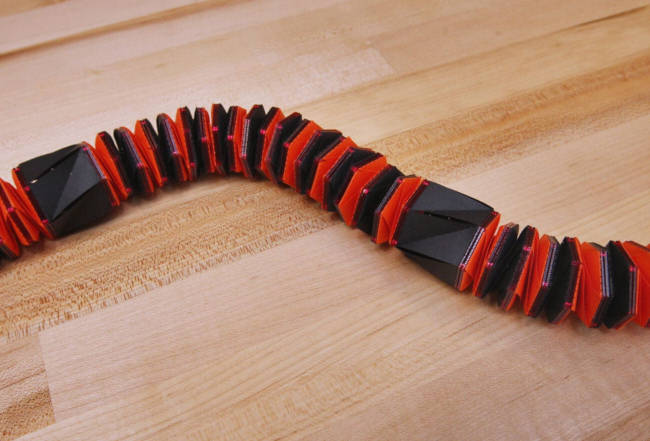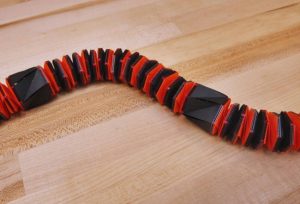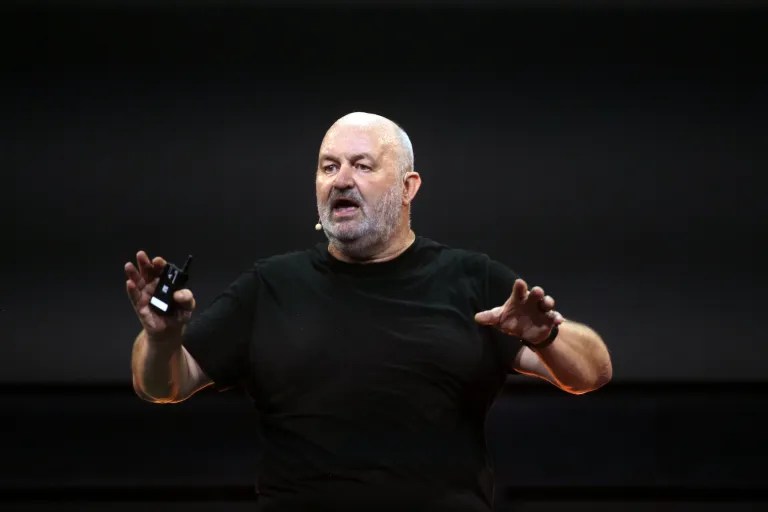
Seeking more ways to move a robot through complex environments, researchers at Princeton University and North Carolina State University have turned to origami animated by thermally-activated bi-material strips.
The body of the snake-like structure is folded from flat sheet using a Kresling pattern, named after Biruta Kresling, an architect that created a number of such folded structures during bio-inspired research in the 1990s.
In this case, the folds allow the structure to take the form of a cylinder, a flattened disk, and any intermediate state, with folding on one side only causing the cylinder to bend for steering.
Motive power is provided by bi-material strips – a liquid crystal elastomer strip bonded to a polyimide strip – strategically glued along the insides of folds.
Differential expansion causes these strips to bend, encouraged by electrically-activated silver nanowire heaters along them.
“Silver nanowire is an excellent material to fabricate stretchable conductors,” said North Carolina State engineering professor Yong Zhu. “Here we used the stretchable heater as the actuation mechanism for the bending and folding motions.”
“In this work we achieved localised, sharp folding to actuate the origami pattern. This actuation method can be generally applied to [creased] origami structures for soft robotics,” added fellow researcher Shuang Wu.
In the proof-of-concept, the mobile structures were short sections of tubular ‘robot’ which could move independently, magnetically-couple end-to-end to form longer robots, and then decouple for further independent motion.
At the moment, a variety of motions have been programmed, all of which are very slow. Further experiments are planned to improve speed and steering using different shapes and patterns.
The work so far is published as ‘Modular multi-degree-of-freedom soft origami robots with reprogrammable electrothermal actuation‘ in the Proceedings of the National Academy of Sciences – payment required for full access.
Provided by Princeton University (credit: Frank Wojciechowski), the image is of a Kresling pattern folded cylinder without actuators, similar to the structure used in the more delicate proof-of concept whose motion can be seen in this Vimeo video.







